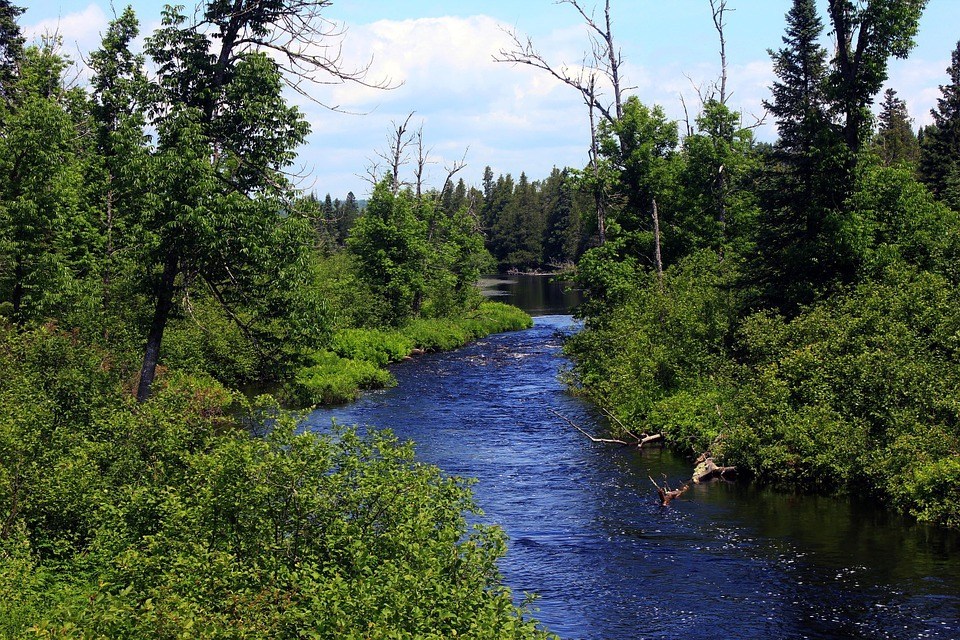
There is no debate among scientists that glaciers covering large portions of North America marked the peak of the last ice age nearly 22,000 years ago, but they do disagree on the source of the trees that led to the eventual reforestation once the ice retreated. A University of Michigan study published Monday seeks to settle the dispute.
Researchers used a recently developed genetic technique to estimate the precise longitude and latitude of the surviving ancestors of today’s forest species referred to as ice-age refugia. Two broadly distributed hickory species, the bitternut and the shagbark, likely survived much farther north and closer to the ice sheet than originally believed.
Identifying the locations of glacial refugia helps scientists understand basic forest history and a key to establishing a baseline showing how fast and far tree species are able to migrate in response to climate change. Also, locating refugia helps biologists identify tree populations that may be genetically unique and important to conservation efforts.
“The traditional view is that these tree species only survived in larger refugia located farther south, where regional climate was much warmer,” University of Georgia post-doctoral research associate Jordan Bemmels said.
“Our results for bitternut hickory provide some of the strongest evidence to date that northern microrefugia existed and were important for survival of some temperate tree species throughout the ice age,” he said.
Biologists looked for signatures of past geographic migrations in the trees’ DNA. Their results for the bitternut hickory support the idea of northern microrefugia, places where local climatic conditions may have allowed the survival of isolated tree populations within a region of generally inhospitable climate.
The general consensus on the location of northern microrefugium is that it is near the confluence of the Mississippi and Ohio rivers, in a region that today includes southernmost Illinois, southeastern Missouri, northeastern Arkansas and westernmost Kentucky. The location is only 160 miles from a site in southwestern Tennessee, near Memphis, where rare preserved remains of ice-age hickories were found decades ago.
Bemmels and his colleagues applied a data analysis technique called X-Origin, initially developed in the laboratory of co-author Lacey Knowles at the University of Michigan to study expansion of pika, a small mammal in Alaska. By broadening the application, researchers examined more than 1,000 genetic markers spread across the genomes of bitternut and shagbark hickories, from genetic material collected from about 150 individuals in each species.
The direction and distance the trees migrated from their initial source population left behind distinctive patterns within their DNA – footprints that could be traced back to the geographic source.
The researchers used a computer simulation technique to model range expansion from different refugia and to produce expectations for the genetic patterns that would likely arise from these different “expansion origins.”
They then compared the simulated genetic patterns to the real genetic patterns extracted from hickory tree DNA to identify the most likely scenarios. By repeating the process millions of times, they were able to do something that had not been done before for temperate trees – statistically estimate the latitude and longitude where the ancestors of modern populations survived the last ice age.
The inferred location of the glacial refugium for the other study species, shagbark hickory, is in the eastern Gulf Coastal Plain and includes most of Alabama, Mississippi and southeastern Louisiana. That location corresponds to more traditional proposals of a southern refuge.
“The ability to extract details from population genomic data about where species took refuge when changing climate conditions drove shifts in their distribution means the researcher’s toolbox now has a powerful way to identify the geographical coordinates of such refugia in any species,” Knowles said.
Various research tools have been applied to the problem over the years, but all of them have limitations. Climate-based models identify only broad areas of potential habitat and traditional studies of the geographic distribution of genealogical lineages provide poor spatial resolution. Fossil pollen records provide some clues on refugia locations, but those records are incomplete for most of eastern North America at the time of the last ice age and have been difficult to interpret.
Northern tree populations that were recently recolonized are often thought to be unimportant for conservation of genetic diversity and long-term species survival relative to southern populations that are believed to be reservoirs of unique genetic diversity. Bemmels and his colleagues conclude that their findings suggest that conventional wisdom about management of genetic diversity may need revising.
Numerous refugial regions have been proposed in eastern North America, including the Gulf Coast, the Atlantic Coastal Plains, the Lower Mississippi River Valley, the Southern Appalachians, the Florida peninsula and central Texas.
“Although the inferred northern refuge in the Mississippi Valley was generally harsh and inhospitable during the glacial period, there were probably milder conditions near glacial meltwater lakes – known as microclimates – in which some temperate tree species could persist,” co-author and University of Michigan biologist Christopher Dick added.
The study was published Monday in the Proceedings of the National Academy of Sciences.
Leave a Reply